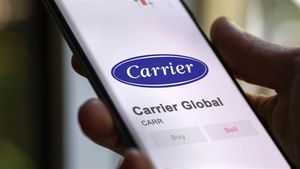Most teams start with Lovable for prototyping, then switch to another platform once they need apps that can scale in production.
If you’re looking for Lovable.dev alternatives, pick Superblocks for enterprise-grade internal tools, Cursor or Claude Code if you’re a developer, or Glide if you’d rather stick to visual builders.
In this article, we’ll discuss what Lovable is great at, where it falls short, and why these alternatives are worth considering.
Where Lovable.dev excels and where it falls short
Lovable.dev delivers on fast prototyping with a minimal learning curve. The platform is great for quickly visualizing ideas and building a proof-of-concept without writing much code. Users mainly need to articulate what functionality they want, and Lovable’s AI handles the rest.
The fast turnaround and built-in hosting make it ideal for early-stage validation when polish and scale are not top priorities.
The problems start appearing once projects grow beyond prototypes:
- Scalability issues: As apps grow, data structure rigidity and tangled logic make refactoring hard. Making small feature changes can force major rewrites.
- Unpredictable costs: Lovable uses a credit-based pricing model, where almost every action (e.g, generating UIs, debugging, editing features) consumes credits. And it's not always clear how many. Costs can balloon if you get stuck in loops or need frequent edits.
- Code consistency issues: Changes are not always predictable or consistent. A new prompt might inadvertently break an earlier feature. The generated code also varies in quality. It often needs cleanup by an engineer later. All of this makes long-term maintenance difficult.
- Platform restrictions: You're largely tied to a React client frontend and a Supabase backend. These choices are reasonable defaults, but they limit flexibility. For instance, Lovable does not support server-side rendering (SSR) for React or alternative backend providers out of the box.
- Security and governance gaps: Lovable’s auto-generated code doesn’t always align with internal security policies. Many teams initially build with it, but then need to bring in experienced engineers to refactor or rebuild for stability and security.
Key reasons teams explore alternatives
When teams move off Lovable, they’re usually not rejecting the idea of AI-assisted app building. Rather, they are seeking tools that can handle production realities better without sacrificing all the convenience of AI.
The features users prioritize in alternatives include:
- Scalability and maintainability: Teams need confidence that their app’s architecture can evolve without imploding. Lovable’s one-size-fits-all structure often makes it cumbersome to add features or handle growth in data or users. Alternatives are attractive if they support a path from MVP to a scalable product.
- Cost predictability: The uncertainty of credit-based billing has burned some Lovable users. Growing teams prefer platforms with clear pricing models, for example, fixed subscriptions or usage metrics that are easier to predict month-to-month.
- Stack flexibility: Being locked into React + Supabase (and whatever conventions Lovable imposes) is limiting for teams that want to use other tech stacks.
- Debugging and reliability: Teams also prioritize tools that produce consistent, testable code. Essentially, they want AI assistance that augments a developer’s workflow rather than a black box that might break things silently. This is one reason some teams shift toward AI integrated in IDEs, where they can track every change.
- Security and governance: For organizations in regulated industries, any development platform must support their security and compliance requirements. That includes features like role-based access control (RBAC), audit logs, single sign-on (SSO), and even on-premise deployment options in some cases.
Lovable.dev alternatives gaining traction in 2025
A handful of platforms are standing out as stronger long-term options for teams that outgrow Lovable’s approach.
Here are a few notable ones:
Superblocks
Superblocks is an AI-native app platform designed for building enterprise-grade internal tools quickly, with security and governance controls. It is geared toward internal applications like customer 360 dashboards, automated workflows, and data management tools.
How it’s different than Lovable: Superblocks enforces enterprise guardrails on AI app generation. Clark, the Superblocks AI agent, enforces your design system, coding standards, and security policies automatically.
Out of the box, the platform supports centralized governance with RBAC, SSO, SCIM, and detailed audit logs of all activity.
Ideal for: CIOs, CTOs, and engineering leaders who want to democratize development safely across their company. It allows both business users and developers to contribute (thanks to the mix of AI, visual editing, and code modes) without compromising on security and coding standards.
Pricing: Superblocks uses custom pricing based on the number of creators (builders), end-users, and whether you need a hybrid deployment.
Cursor
Cursor is an AI-enhanced IDE. It offers features like multi-file contextual code generation, semantic search across your codebase, inline explanations of code, and one-click fixes for errors. It doesn’t generate a new app from prompts like Lovable or Clark, but it helps you work on existing codebases or build new ones by writing code with AI assistance.
How it’s different from Lovable: The core difference is workflow. Lovable is a standalone app builder. You describe what you want, and it creates an app for you, mostly abstracting away code.
Cursor, on the other hand, assumes you are coding (or at least reading code) and want AI help in that context. It doesn’t lock you into a particular framework. You’re free to use any stack, libraries, or custom architecture. This makes it great for understanding, refactoring, or extending a complex codebase.
Ideal for: Developers or teams with established codebases or starting projects from scratch, and want to boost productivity. If you're using Superblocks, you can edit the underlying code in Cursor.
Pricing: Cursor’s Hobby plan is free for limited agent requests and tab completions. The paid plans start at $20/month for individuals and $40/user/month for teams.
Claude Code
Claude Code is an AI coding agent powered by Anthropic’s Claude models. It integrates with your development workflow via an IDE plugin or command-line. Since it's agentic, it can chain together higher-level tasks (e.g., run tests, create commits, open PRs, launch shell commands) and handle coordination across files and functions in your project.
How it’s different than Lovable: Claude doesn’t generate a deployed app with a database and UI by itself. Instead, it helps you write whatever code you need, within your own stack and environment. This offers much more flexibility than Lovable, since you aren’t constrained by what the platform supports. You get full control of the architecture.
Ideal for: Development teams and engineers who prefer working in the terminal.
Pricing: Claude Code is available through a Claude Pro subscription, which costs $20/month, billed monthly. If you’re working on moderate to large projects with occasional complex analysis needs, you’ll at least need the Claude Max plan, which costs $100/month. You can also purchase API credits directly.
Glide
Glide is a no-code app development platform that enables users to create custom business apps for web and mobile devices without any programming. Teams can build applications by connecting spreadsheets, using drag-and-drop components, and leveraging the AI features for intelligent workflows.
How it’s different from Lovable: Glide is component and workflow-driven. You design screens, bind data, and set logic visually. You don’t need to know how to code to debug or refactor your app. You can update your app visually without prompting.
Ideal for: Ops, CX, and field teams that need internal tools, CRMs, or portals tied to Sheets/Airtable/SQL and want to ship in days without a dev team
Pricing: Pricing is organized into individual and business tiers. The free plans support 1 app, 10 personal users, and up to 25K rows. The paid plans increase these limits. They start at $25/month for individuals and $249/month for businesses, billed monthly.
What does the future of AI app builders look like?
AI app builders are maturing from tools like Lovable that are meant for early-stage apps towards platforms that can build production-ready apps.
Here’s why alternatives to Lovable are gaining ground:
- Flexible stack: Lovable builds around React, Tailwind, and Supabase, which can be limiting for organizations that prefer other frameworks. Future AI app builders will give teams more flexibility to choose their tech stacks, languages, and integrations.
- Enterprise governance: Organizations are moving beyond individual prototyping to team-wide AI development. Lovable alternatives are building in features like granular permissions, audit trails, and centralized AI guardrails that enterprises need.
- Production-grade capabilities: Lovable apps often require significant rework before they’re ready for production deployment. There’s a need for alternatives that generate secure and maintainable code from the start.
Choosing the right Lovable alternative for your team
Lovable.dev is still a great solution for solo makers, product teams, or early-stage startups that need to get an app in front of users yesterday. It removes initial barriers and delivers speed that’s hard to beat when the scope is small and time is critical.
As projects grow, though, it’s increasingly clear that Lovable is not enough. The requirements of a hobbyist or pre-seed startup are vastly different from those of a scaling company or enterprise.
If you’re a non-technical founder who just needs a pitch-ready demo, by all means, give Lovable or similar prompt-to-app tools a try.
If you’ve validated the idea and now need to build a scalable version, consider migrating to a platform or stack that supports that. This can be an AI-augmented IDE like Cursor, an internal tool builder like Superblocks, or another tool that your engineering team prefers.
Frequently asked questions
Can you use Lovable for free?
Yes, you can use Lovable for free on the free tier for up to 5 daily credits (30 max monthly), then upgrade for more usage.
Who is Lovable.dev best suited for?
Lovable.dev suits non-technical founders, product managers, designers, or solo entrepreneurs who need to build prototypes or MVPs quickly.
What are the most enterprise-ready alternatives?
Superblocks is a top enterprise-ready alternative since it's built from the ground up with governance, security, and integration in mind, with features like SSO, RBAC, audit logs, and more.
Are there free or open-source Lovable alternatives?
Yes, open-source Lovable alternatives include Bolt.diy (the open-source version of Bolt.new) for general web app development and ToolJet for building internal tools.
Should startups stick with Lovable.dev or switch early?
Startups can stick to Lovable for rapid iteration in the early stages, then switch to a scalable platform as their user base and complexity grow.






